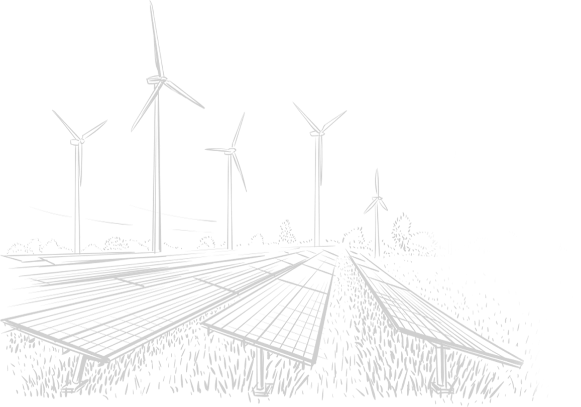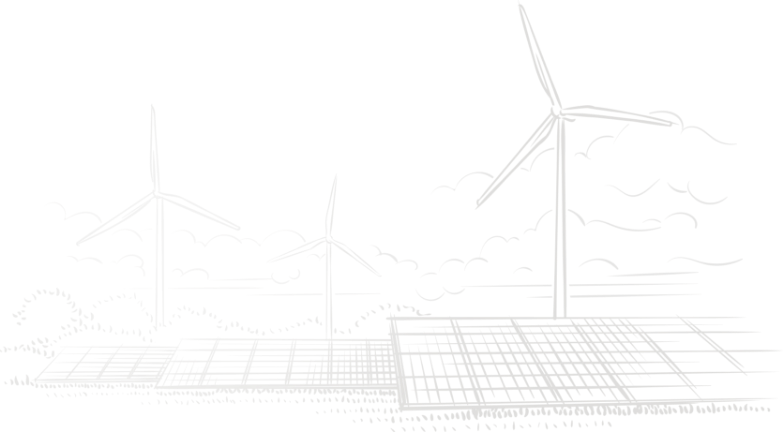Inverters play a key role in photovoltaic systems and are the core components that convert the DC power generated by solar panels into AC power. Its main function is to ensure that the electricity generated by the solar system is compatible with home appliances and the grid, making it a usable energy source. By converting DC power into AC power, the inverter allows the energy generated by the photovoltaic system to be used to drive household appliances, lamps and other electrical equipment to meet the power needs of daily life and industrial production. The advanced inverter is equipped with Maximum Power Point Tracking (MPPT) technology, which can adjust the operating voltage and current of the solar panels in real time to maximize the system’s power generation efficiency and ensure that the photovoltaic system can achieve optimal performance under various weather conditions.
The inverter also undertakes the important task of grid interconnection and can automatically detect and operate synchronously with the grid to ensure the safety and stability of the solar system in delivering power to the grid. Modern inverters also have intelligent monitoring and remote control functions, which can monitor the system operating status in real time, discover and solve problems in a timely manner, and improve system reliability and operating efficiency. As a key component in photovoltaic systems, inverters play important conversion, optimization and management functions, promoting the development and application of solar power generation technology.
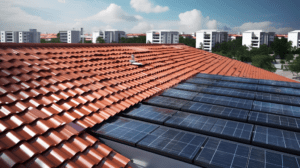
An inverter is an electronic device designed to convert direct current (DC) electricity into alternating current (AC) electricity. In the context of a photovoltaic (PV) system, the process of DC to AC conversion in an inverter involves several key steps:
1、Rectification Stage: Initially, solar panels convert sunlight into DC electricity. This DC electricity is then transmitted to the inverter via wiring. Inside the inverter, the DC electricity enters a component called a rectifier. The rectifier converts the AC electricity into DC.
2、Inversion Stage: Once the DC electricity enters the rectifier, it moves into the inverter section. The inverter uses electronic components and switching circuits to convert the DC electricity into AC electricity. This process involves switching the DC electricity at high frequencies to simulate the waveform and frequency of AC electricity.
3、Output AC Electricity: After conversion, the inverter outputs the converted AC electricity, which can be connected to household appliances, lights, or fed into the grid for use. The inverter ensures that the output AC electricity meets standard voltage, frequency, and waveform requirements, making it suitable for various electrical devices and power networks.
In summary, the DC to AC conversion process in an inverter involves controlling electronic components’ switches and adjusting current directions to convert DC electricity generated by solar panels into usable AC electricity for homes and the grid. This conversion is a crucial step in the normal operation of a PV system and the utilization of solar energy generation.
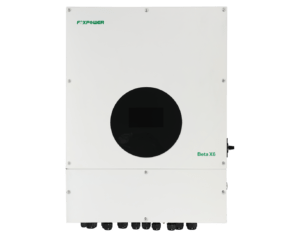
Inverters play a critical role in grid connection and stability within photovoltaic (PV) systems. Grid-connected inverters are designed to synchronize the output AC electricity from solar panels with the utility grid. This process involves continuously monitoring the grid’s voltage, frequency, and phase, and adjusting the inverter’s output to match these parameters. By maintaining synchronization, grid-connected inverters ensure that solar-generated electricity seamlessly integrates into the larger power grid without causing disruptions or fluctuations.
Moreover, inverters contribute to grid stability by providing ancillary services such as reactive power control and voltage regulation. These capabilities help stabilize the grid during variations in solar generation or changes in load demand. Additionally, modern grid-tied inverters are equipped with anti-islanding protection, which detects grid failures and immediately disconnects from the grid to prevent the flow of electricity back into the grid, ensuring safety for utility workers and system reliability. Inverters’ grid-interconnection features enhance the stability and reliability of PV systems, facilitating the effective integration of solar energy into the broader electricity infrastructure.
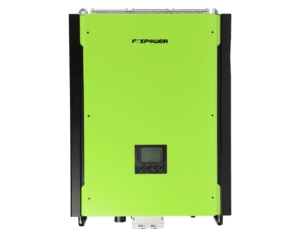
The inverter system monitoring and control function is a vital part of the photovoltaic system. Modern inverters are equipped with advanced monitoring systems that can monitor the operating status and performance parameters of the solar power generation system in real time, such as voltage, current, power and temperature. These monitoring data can be viewed through the display screen of the inverter itself or the remote monitoring platform, helping users understand the system operation, discover problems in time, and make adjustments and optimizations.
In addition to monitoring functions, the inverter also has a certain degree of intelligent control capabilities. The inverter can automatically adjust the working mode and parameters based on the monitored data to improve the efficiency and stability of the system. For example, the inverter can adjust the maximum power point tracking (MPPT) algorithm based on conditions such as light intensity and temperature to optimize solar power generation efficiency. In addition, the inverter can also support remote control functions, allowing users to remotely operate and manage the system through mobile applications or web interfaces, improving the convenience and user experience of the system. The continuous improvement of inverter system monitoring and control functions provides important support for the safe operation and performance optimization of photovoltaic power generation systems.
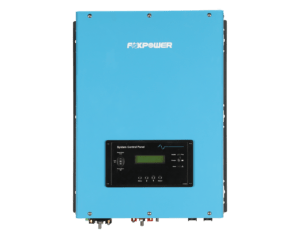
As a key component of photovoltaic systems, solar inverters have broad prospects for future development. As renewable energy technology continues to mature and market demand grows, inverter technology will continue to develop in a more efficient and smarter direction. Future solar inverters are expected to achieve higher conversion efficiency and wider applicability to meet the growing demand for photovoltaic power generation market.
In terms of technology, solar inverters will be more intelligent and integrated, with more functions and services. For example, future inverters may integrate energy storage management systems to achieve better utilization and dispatch of solar power. In addition, the inverter may also integrate Internet of Things (IoT) technology to achieve remote monitoring, intelligent diagnosis and predictive maintenance, improving system reliability and operating efficiency.
In addition, solar inverters will also face more challenges and opportunities in interconnecting with the power system. Future inverters need to better adapt to the intelligent and digital transformation of the power network, achieve interconnection with energy infrastructure such as smart grids and electric vehicle charging facilities, and promote the coordinated development and sustainable utilization of the energy system. The future development of solar inverters will play a key role in technological innovation and energy transformation, providing important support for the large-scale application of renewable energy and the transformation of the energy structure.


